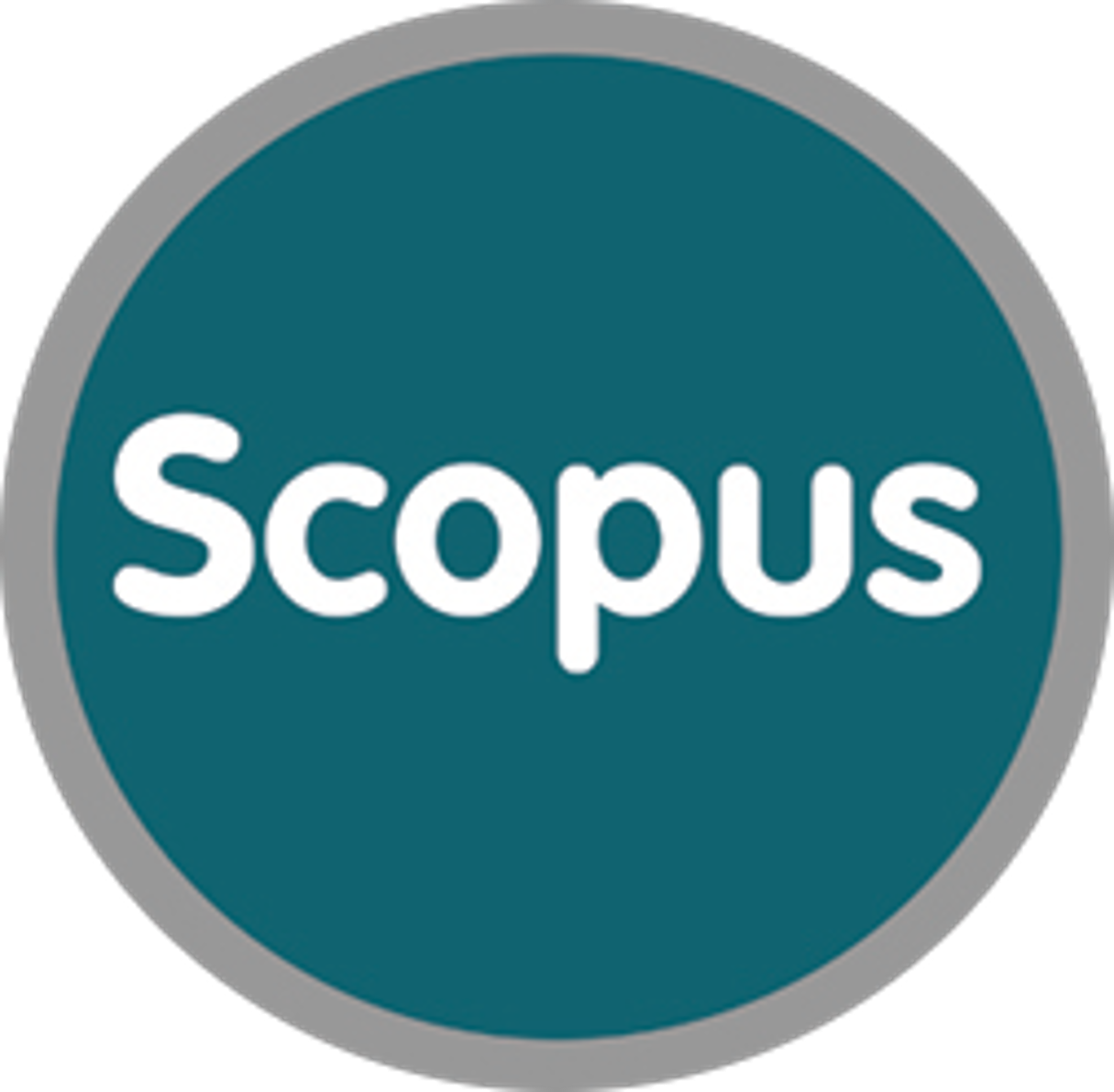Prediction of the Change Rate of Tumor Cells, Healthy Host Cells, and Effector Immune Cells in a Three-Dimensional Cancer Model using Extended Kalman Filter
Abstract
Keywords
Full Text:
PDFReferences
L. Marsha, K. R. Conroy, and J. L. Davis, Atlas Pathophysiology. Lippincott Williams & Wilkins, 2010.
V. Kumar, A. K. Abbas, and J. C. Aster, Robbins and Cotran Pathologic Basis of Disease. Canada: Elsevier, 2014.
M. Itik and S. P. Banks, "Chaos in a three-dimensional cancer model" Internat. J. Bifurc. Chaos, vol. 20, no. 1, pp. 71-79, 2010. DOI:10.1142/S0218127410025417
C. Draghi et al., "How the Growth Rate of Host Cells Affects Cancer Risk in a Deterministic Way" Chaos, vol. 27, no. 9, p. 093101, 2017. DOI:10.1063/1.5000713
S. Kumar et al., "A chaos study of tumor and effector cells in fractional tumor-immune model for cancer treatment" Chaos, Solitons & Fractals, vol. 141, p. 110321, 2020. DOI:10.1016/j.chaos.2020.110321
J. Sardanyés et al., "Activation of effector immune cells promotes tumor stochastic extinction: A homotopy analysis approach" Applied Mathematics and Computation, vol. 252, pp. 484-495, 2014. DOI:10.1016/j.amc.2014.12.005
B. Zhang et al., "Equilibrium between Host and Cancer Caused by Effector T Cells Killing Tumor Stroma" American Association for Cancer Research, vol. 68, no. 5, pp. 1563-1571, 2008. DOI:10.1158/0008-5472.CAN-07-5324
S. Mochrie and C. D. Grandi, Rates of Change: Drugs, Infections, and Weapons of Mass Destruction. Springer International Publishing, 2023.
L. J. Zwi et al., "The role of immune effector cells in flavone acetic acid-induced injury to tumor cells in EMT6 spheroids" Oncology Research, vol. 4, no. 8-9, pp. 333-339, 1992.
S. F. Slovin, 5 - Can Effector Cells Really "Effect" an Anti-Tumor Response as Cancer Therapy? Academic Press, 2010.
S. A. Alharbi and A. S. Rambely, "A New ODE-Based Model for Tumor Cells and Immune System Competition" Mathematics, vol. 8, no. 8, pp. 1285, 2020. DOI:10.3390/math8081285
J. Wang and S. Liu, "Persistence and extinction of the tumor-immune stochastic model with effector cells and cytokines" Journal of Applied Analysis & Computation, vol. 13, no. 2, pp. 655-670, 2023. DOI:10.11948/20210464
K. C. Wang et al., "Effector and enhancing lymphoid cells in plasmacytoma-bearing mice. II. Dynamic changes during tumor progression" International Journal of Cancer, vol. 25, no. 4, pp. 493-501, 1980. DOI:10.1002/ijc.2910250411
M. Aqeel and S. Ahmad, "Analytical and Numerical Study of Hopf Bifurcation Scenario for a Three-Dimensional Chaotic System" Nonlinear Dyn, vol. 84, no. 2, pp. 755-765, 2016. DOI:10.1007/s11071-015-2525-z
K. E. Starkov and L. N. Coria, "Global dynamics of the Kirschner-Panetta model for the tumor immunotherapy" Nonlinear Anal.: Real World Appl., vol. 14, no. 3, pp. 1425-1433, 2013. DOI:10.1016/j.nonrwa.2012.10.006
H. C. Wei and J. T. Lin, "Periodically pulsed immunotherapy in a mathematical model of tumor-immune interaction" Int. J. Bifurc. Chaos, vol. 23, no. 4, p. 1350068, 2013. DOI:10.1142/S0218127413500685
A. G. López et al., "Avoiding healthy cells extinction in a cancer model" J. Theor. Biol., vol. 349, pp. 74-81, 2014. DOI:0.1016/j.jtbi.2014.01.040
P. A. Valle et al., "Bounding the dynamics of a chaotic-cancer mathematical model" Math. Probl. Eng., vol. 2018, no. 1, pp. 9787015, 2018. DOI:10.1155/2018/9787015
S. Khajanchi, M. Perc, and D. Ghosh, "The influence of time delay in a chaotic cancer model" Chaos, Interdiscip. J. Nonlinear Sci., vol. 28, no. 10, pp. 103101, 2018. DOI:10.1063/1.5052496
B. Ghanbari, "On the modeling of the interaction between tumor growth and the immune system using some new fractional and fractional-fractal operators" Adv Differ Equ., vol. 2020, no. 1, pp. 585, 2020. DOI:10.1186/s13662-020-03040-x
W. Gilpin, "Chaos as an interpretable benchmark for forecasting and data-driven modelling" https://arxiv.org/abs/2110.05266, Accessed on 12 April 2023.
S. Mejri, A. S. Tlili, and N. B. Braiek, "On the state estimation of chaotic systems by a particle filter and an extended Kalman filter" IEEE Xplore, pp. 1-6, 2014. DOI:10.1109/SSD.2014.6808891
Q. Butler et al., "Generalizing the unscented Kalman filter for state estimation" SPIE, vol. 12547, pp. 13-26, 2023. DOI:10.1117/12.2664227
A. S. Mendes et al., Extended Kalman Filter for a Monitoring System of the Guyed Towers. IntechOpen eBooks, 2023.
N. Ngatini, E. Apriliani, and H. Nurhadi, "Comparison of AUV Position Estimation Using Kalman Filter, Ensemble Kalman Filter and Fuzzy Kalman Filter Algorithm in the Specified Trajectories" InPrime: Indonesian Journal of Pure and Applied Mathematics, vol. 4, no. 1, pp. 1-18, 2022. DOI:10.15408/inprime.v4i1.22912
H. Singh, K. V. Mishra, and A. Chattopadhyay, "Inverse Unscented Kalman Filter" arXiv:2304.01698, 2023.
J. Huang et al., "Extended Kalman Filter-Based Vehicle State Estimation for Direct Yaw Moment Control Systems" IEEE Xplore, pp. 6-10, 2023. DOI:10.1109/RCAE56054.2022.9995854
P. Setoodeh, S. Habibi, and S. Haykin, Kalman Filter. In Nonlinear Filters. Wiley Online Library, 2022.
S. Lee and M. I. Lee, "Effective Methods for Increasing Model Background Error in the Ensemble Kalman Filtering in Aerosol Data Assimilation" EGU General Assembly 2023, Vienna, Austria, 24-28 Apr 202, pp. EGU23-11371, 2023. DOI:10.5194/egusphere-egu23-11371
M. de Zhang, K. long Li, and B. qing Hu, "Modified Single Propagation Unscented Kalman Filter" DEStech Transactions on Computer Science and Engineering, 2019. DOI:10.12783/dtcse/aicae2019/31500
N. Fitriyati, G. Kusuma, and I. Fauziah, "Detection of Heat Conduction Disturbance in Cylindrical-Shaped Metal Chip using Kalman Filter and Ensemble Kalman Filter" Proceedings of the International Conference on Mathematics and Islam (ICMIs 2018), vol. 1, pp. 9-14, 2018. DOI:10.5220/0008516400090014
V. A. Kuznetsov et al., "Nonlinear dynamics of immunogenic tumors: Parameter estimation and global bifurcation analysis" Bull. Math. Biol, vol. 56, no. 2, pp. 295-321, 1994. DOI:10.1016/S0092-8240(05)80260-5
L. G. de Pillis and A. Radunskaya, "The dynamics of an optimally controlled tumor model: A case study" Math. Comput. Modell, vol. 37, no. 11, pp. 1221-1244, 2003. DOI:10.1016/S0895-7177(03)00133-X
D. Kirschner and J. C. Panetta, "Modeling immunotherapy of the tumor-immune interaction" J. Math. Biol., vol. 37, no. 3, pp. 235-252, 1998. DOI:10.1007/s002850050127
Z. Bajzer, M. MaruÅ¡ic´, and S. Vuk-Pavlovic´, "Conceptual frameworks for mathematical modeling of tumor growth dynamics" Math. Comput. Model, vol. 23, no. 6, pp. 31-46, 1996. DOI:10.1016/0895-7177(96)00018-0
M. Itik, M. U. Salamci, and S. P. Banks, "Optimal control of drug therapy in cancer treatment" Nonlin. Anal. Th. Meth. Appl., vol. 71, no. 12, pp. e1473-e1486, 2009. DOI:10.1016/j.na.2009.01.214
L. G. de Pillis, W. Gu, and A. E. Radunskaya, "Mixed immunotherapy and chemotherapy of tumors: Modeling, applications and biological interpretations" J. Theoret. Biol., vol. 238, no. 4, pp. 841-862, 2006. DOI:10.1016/j.jtbi.2005.06.037
B. Günay et al., "A Fractional Approach to a Computational Eco-Epidemiological Model with Holling Type-II Functional Response" Symmetry, vol. 13, no. 7, pp. 1159, 2021. DOI:10.3390/SYM13071159
A. J. Kadhim and A. A. Majeed, "Epidemiological Model Involving Two Diseases in Predator Population with Holling Type-II Functional Response" International Journal of Nonlinear Analysis and Applications, vol. 12, no. 2, pp. 2085-2107, 2021. DOI:10.22075/IJNAA.2021.5349
L. R. Sari et al., "Mathematical model of Guillain-Barre syndrome with Holling type II functional response" Commun. Math. Biol. Neurosci., vol. 2020, pp. 1-15, 2020. DOI:10.28919/cmbn/4805
D. P. Feldman, Chaos and Dynamical Systems. Princeton University Press, 2019. DOI:10.2307/j.ctvc5pczn
M. T. Rosenstein, J. J. Collins, and C. J. De Luca, "A practical method for calculating largest Lyapunov exponents from small data sets" Physica D, vol. 65, no. 1-2, pp. 117-134, 1993. DOI:10.1016/0167-2789(93)90009-P
J. S. Richman and J. R. Moorman, "Physiological time-series analysis using approximate and sample entropy" American Journal of Physiology-Heart and Circulatory Physiology, vol. 278, no. 6, p. H2039-H2049, 2000. DOI:10.1152/ajpheart.2000.278.6.H2039
A. Delgado-Bonal and A. Marshak, "Approximate Entropy and Sample Entropy: A Comprehensive Tutorial" Entropy, vol. 21, no. 6, pp. 541, 2019. DOI:10.3390/e21060541
R. G. Gibbs, "Criteria for When the Extended Kalman Filter Works and Issues with Sigma Point Kalman Filters" 2023. DOI:10.13140/RG.2.2.30946.71367/1
A. Jarrah, A.-K. Al-Tamimi, and T. Albashir, "Optimized Parallel Implementation of Extended Kalman Filter Using FPGA" Journal of Circuits, Systems, and Computers, vol. 27, no. 1, pp. 1850009, 2018. DOI:10.1142/S0218126618500093
L. Tarawneh et al., "The Accuracy Evaluation of State Estimation in Smart Power Grids" 2020 International Conference on Electrical, Communication, and Computer Engineering (ICECCE), pp. 1-4, 2020. DOI:10.1109/ICECCE49384.2020.9179352
J. Fogelquist, Q. Lai, and X. Lin, "On the Error of Li-ion Battery Parameter Estimation Subject to System Uncertainties" Journal of The Electrochemical Society, vol. 170, no. 3, pp. 030510, 2023. DOI:10.1149/1945-7111/acbc9c
D. S. Inaibo et al., "Design of Extended Kalman Filter for Object Position Tracking" International Journal of Engineering Research & Technology (IJERT), vol. 7, no. 7, pp. 427-435, 2018. DOI:10.17577/IJERTV7IS070025
N. Piga, U. Pattacini, and L. Natale, "A Differentiable Extended Kalman Filter for Object Tracking Under Sliding Regime" Frontiers in Robotics and AI, vol. 8, pp. 686447, 2021. DOI:10.3389/frobt.2021.686447
S. Y. Chang, H.-C. Wu, and Y.-C. Kao, "Tensor Extended Kalman Filter and Its Application to Traffic Prediction" IEEE Transactions on Intelligent Transportation Systems, vol. 24, no. 12, pp. 13813-13829, 2023. DOI:10.1109/TITS.2023.3299557
A. S. M. Bakibillah et al., "Robust estimation of traffic density with missing data using an adaptive-R extended Kalman filter" Applied Mathematics and Computation, vol. 421, pp. 126915, 2022. DOI:10.1016/j.amc.2022.126915
C. Dong et al., "Freeway Traffic State Estimation Based on Extended Kalman Filter" in Conference: 15th COTA International Conference of Transportation Professionals, pp. 420-430, 2015. DOI:10.1061/9780784479292.038
G. Benrhmach et al., "Nonlinear Autoregressive Neural Network and Extended Kalman Filters for Prediction of Financial Time Series" Journal of Applied Mathematics, vol. 2020, no. 1, pp. 5057801, 2020. DOI:10.1155/2020/5057801
I. H. Susanto et al., "Implementation Fuzzy and Extended Kalman Filter for Estimation of High and Low Stock Price Travel Company" Pattimura International Journal of Mathematics (PIJMath), vol. 2, no. 1, pp. 17-24, 2023. DOI:10.30598/pijmathvol2iss1pp17-24
Ö. S. Alp, L. Özbek, and B. Canbaloglu, "An analysis of stock market prices by using extended Kalman filter: The US and China cases" Investment Analysts Journal, vol. 52, no. 1, pp. 67-82, 2023. DOI:10.1080/10293523.2023.2179160
A. Jordana et al., "Risk-Sensitive Extended Kalman Filter" 2023. DOI:10.48550/arXiv.2305.11573
G. R. Gopinath and M. B. Pudutha, "High Performance Control and Extended Kalman Filter Based Estimation of Sensorless Permanent Magnet Synchronous Motor Drive for Robotic Applications" International Conference on Human-Computer Interaction, vol. 14057, pp. 500--512, 2023. DOI:10.1007/978-3-031-48047-8_33
N. Fitriyati et al., "EnKF Estimation: Comparison of Analytical and Numerical Forecast Step" Far East Journal of Theoretical Statistics, vol. 36, no. 1, pp. 117-128, 2011.
DOI: https://doi.org/10.37905/jjbm.v5i1.24672
Copyright (c) 2024 Nina Fitriyati, Salma Abidah Faizah, Taufik Edy Sutanto

This work is licensed under a Creative Commons Attribution-NonCommercial 4.0 International License.
Jambura Journal of Biomathematics (JJBM) has been indexed by:
EDITORIAL OFFICE OF JAMBURA JOURNAL OF BIOMATHEMATICS |
 | Department of Mathematics, Faculty of Mathematics and Natural Science, Universitas Negeri Gorontalo Jl. Prof. Dr. Ing. B. J. Habibie, Moutong, Tilongkabila, Kabupaten Bone Bolango 96554, Gorontalo, Indonesia |
 | Email: [email protected] |
 | +6281356190818 (WA Only) |
 | Jambura Journal of Biomathematics (JJBM) by Department of Mathematics Universitas Negeri Gorontalo is licensed under a Creative Commons Attribution-NonCommercial 4.0 International License. Powered by Public Knowledge Project OJS. |
















